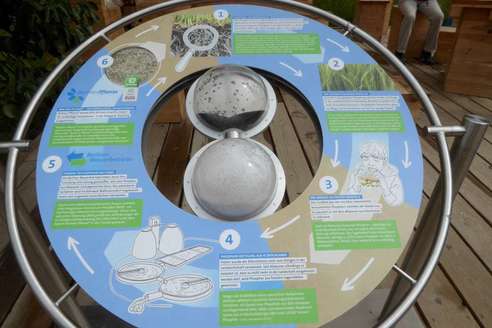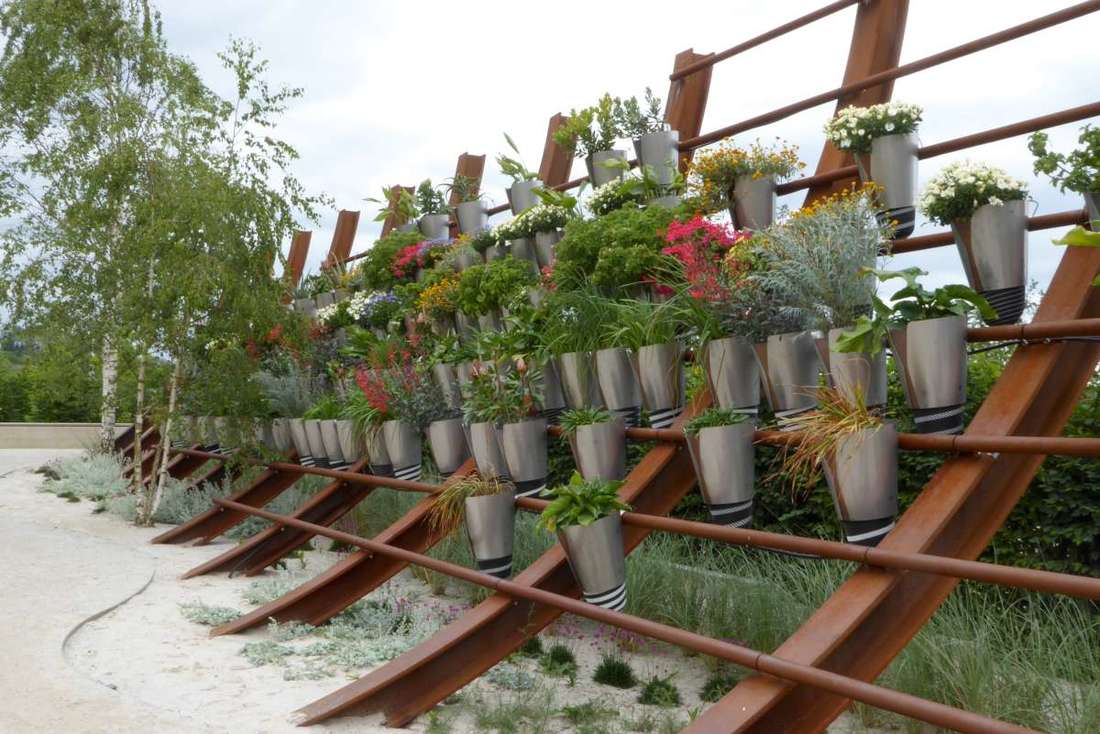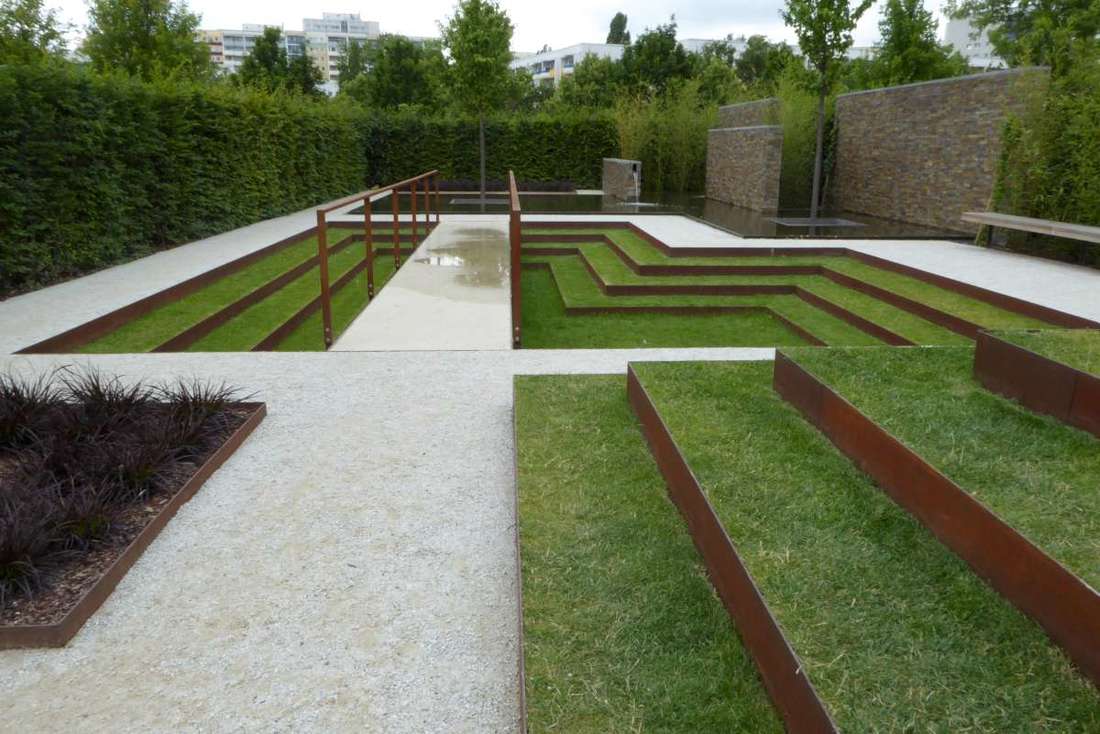I was pleasantly surprised to see so many children there, with much of the educational drive aimed at primary school children who seemed to be coming for workshops, interactive talks, hands-on experiences. And for play. Because the organisers have not forgotten that fun should be part of the game and have included some lovely playgrounds. So if you are a parent, unlike at Chelsea, there is plenty of room for children to roam! In fact - the site tends to be so large that smaller children (as well as anyone who finds longer walks strenuous and difficult) may need a bit of help. One such that all visitors will want to try is the specially built cable car across the site - more of which later.
Or you could concentrate on just some parts of the show, according to your own interests and preferences. For most gardeners that would probably mean the show gardens. There are several categories here. There are those meant to stay: in addition to the aforementioned Gardens of the World, you'll find a newly-designed dahlia garden (didn't look like anything when I visited in June but should be amazing now) and a ribbon of grasses and prairie planting in the New German Style. I'm not sure the rose garden is new but it sure is there to stay, too.

So, in "Cultivated by Fire" the designers from Australian firm T.C.L. took their inspiration from a method called "Fire-Stick Farming", practiced for millennia by the Aborigines to increase soil fertility. The result of a controlled burning-down of vegetation is a landscape that resembles a mosaic of plots at different stages of regeneration. Here in Berlin, visitors were led past the charred remains of trees stems in barren soil to increasingly colourful and abundant island beds emerging from the red ground.
And artist Martin Kaltwasser in his "Los Angeles Garden" wants to point out the ambivalence of one of Berlin's twin cities as a destination of dreams on one hand (cue: Hollywood) and textbook example of urban sprawl on the other. For this, he has created an exact replica of a (real) green area and its surrounding: a tiny island of 8x9 metres of fenced-in lawn, complete with six palm trees and two benches, in the hostile sea of tarmac and cars that is Bergamot Station car park.
Among others, there was an Aquaponic Garden, a bee-friendly and a beach-themed one, and one called "Move Me" where all the various elements - garden furniture as well as beds/ planters - were made of wooden pallets and/ or mounted on castors, making this a very flexible garden indeed. Others were called "Change of Perspectives", a sunken garden to be experienced on several different levels, or "Contrasts". Being very partial to lush broad-leaved planting that gives shade and creates a jungly feel, I particularly liked the mock-up of a city backyard called "CityTrop" with lots of subtropical species for those with a severe case of wanderlust.
In fact, as the term Promenade suggests, it is a walk leading you through four individual "gardens". Each of them boldly modern and stark in design, the Promenade Aquatica for me proved the visually outstanding and most lasting memory of IGA 2017. While personally, bar the pond perhaps, I can't really see the individual sections work as private gardens they would make stunning landscape design for a public square or the courtyard of a prestigious hotel/ restaurant/ corporate headquarter. However, I'm sure there are plenty of people who'd happily have one or other installed in their backyard if they could afford it.
Perhaps I'm being a bit unfair and not just for the reasons mentioned above - much larger scale but not necessarily an accordingly scaled-up budget and a totally different time-scale and context. For instance, I should like to see again the plantings in "show beds" outdoors now. For back in June, after a sustained period of heat and drought in spring, the plants simply had not had a chance to settle in well and bulk up. Which might have explained why there was so much soil still on show between the regimented grit of bedded out plants. With a bit of time and enough moisture it may have developed into something quite beautiful. And planting along the "Kienbergterrassen" - terraced beds along the side of Kienberg hill, designed with different colour themes - actually was pretty good; a mixture of bulbs and perennials mainly. Still, at the time I felt the real stars where the wildflowers.
And as I took in the 360° panorama of Berlin, its suburbs and the agricultural landscape beyond in the fading light, some rock music drifted over. Way down and out front in the on-site arena a concert had begun. The music sounded familiar. And after the wind had brought me some more bits, it struck me: these songs by a German band had topped the charts when I last lived in Berlin years ago! It really felt like a homecoming.


























 RSS Feed
RSS Feed